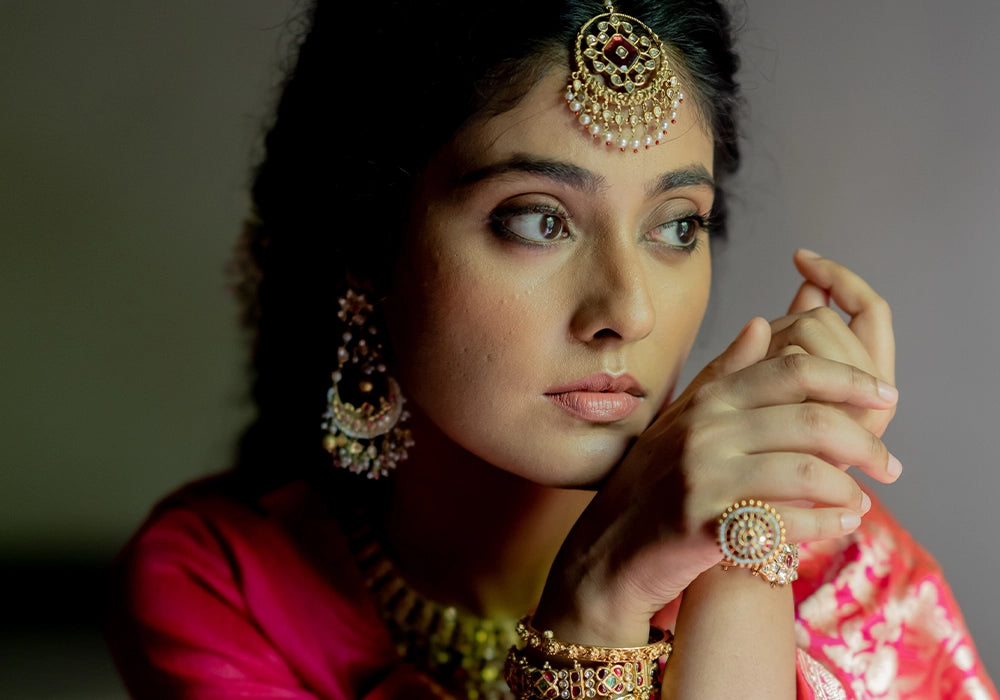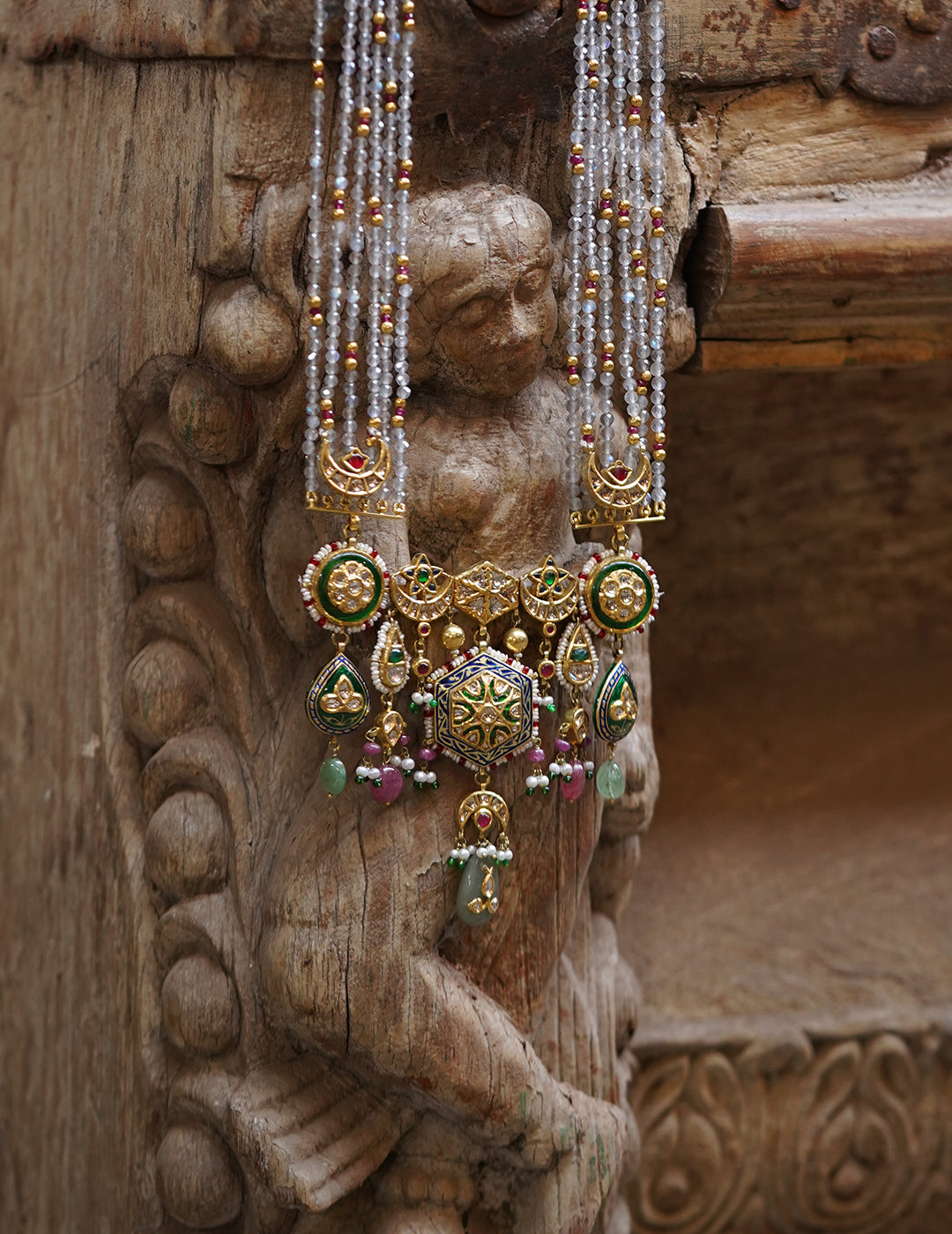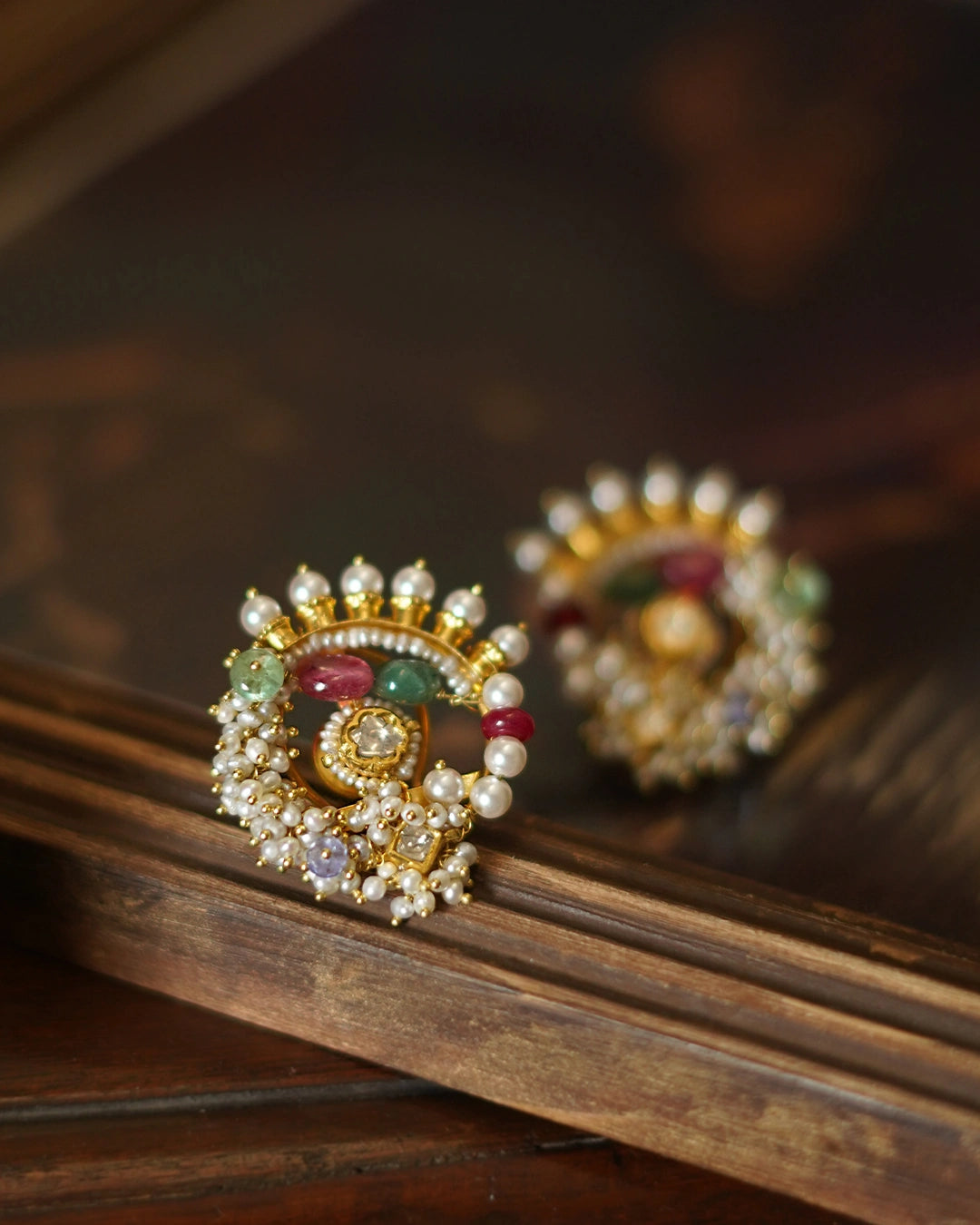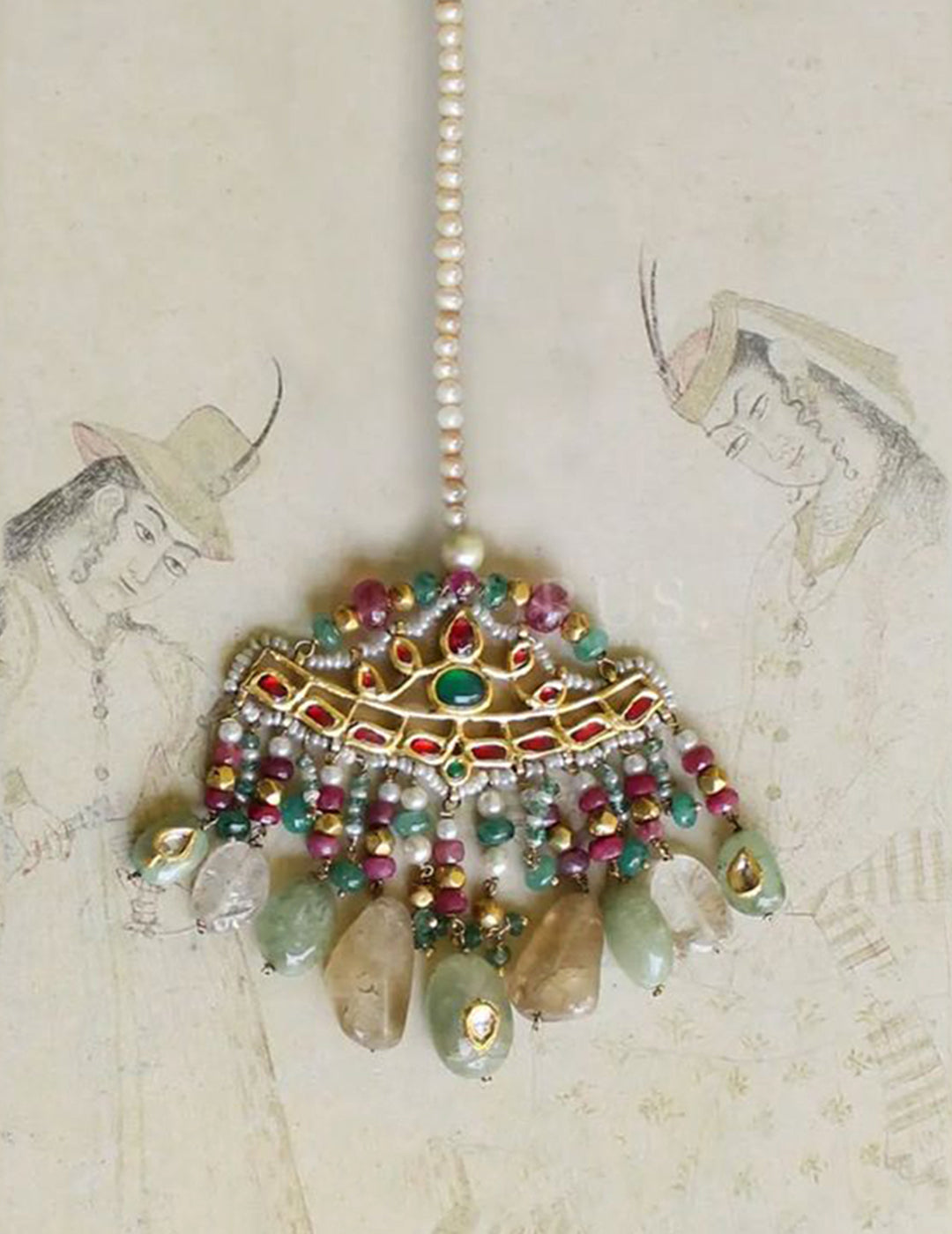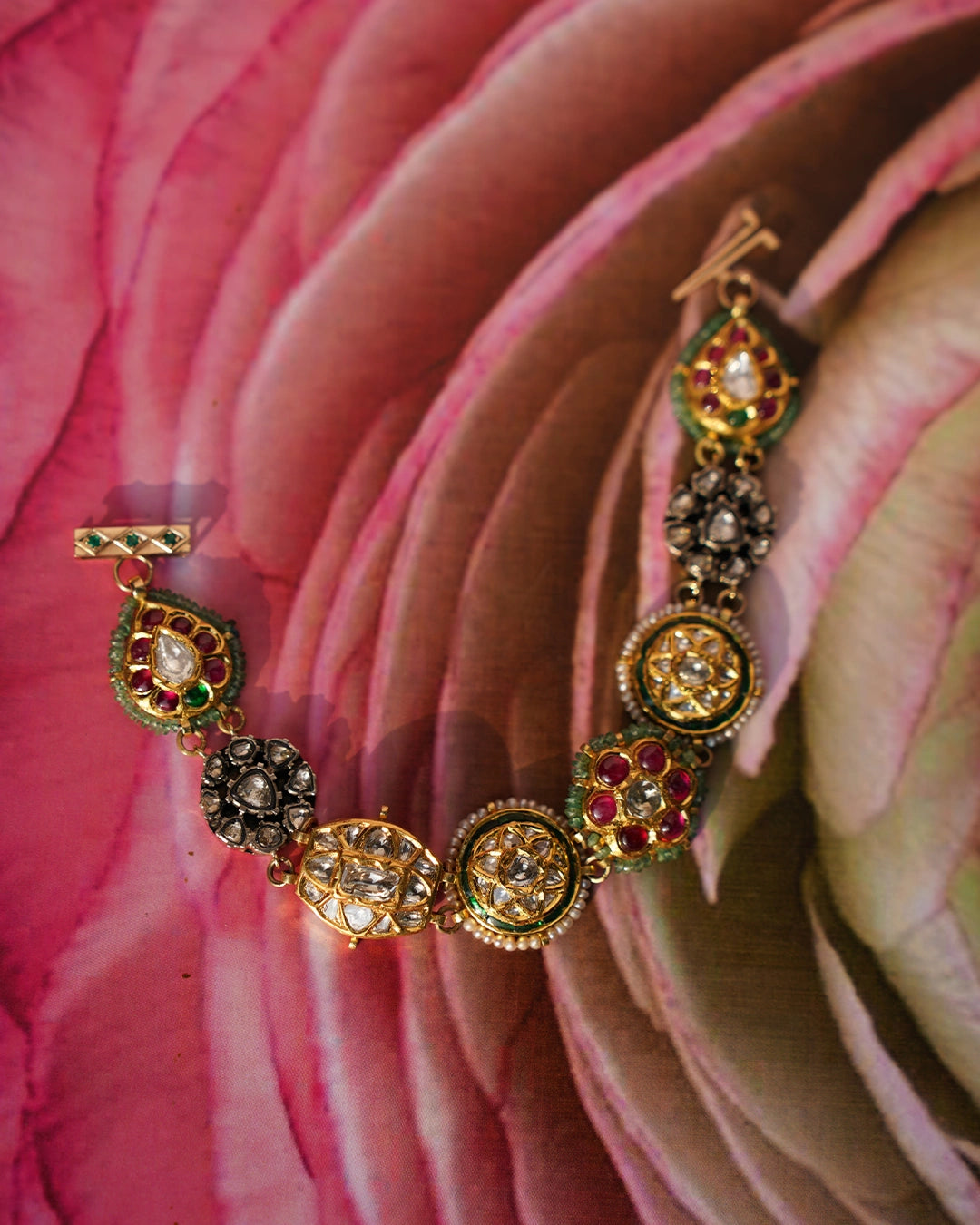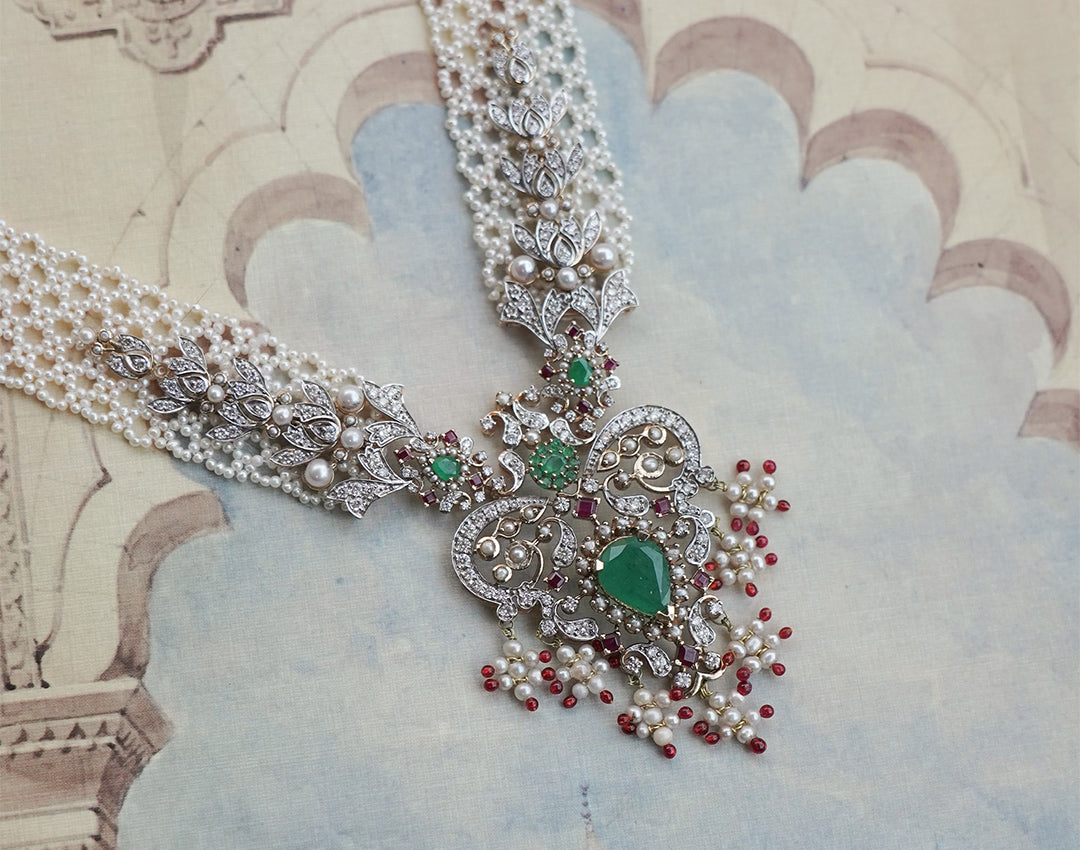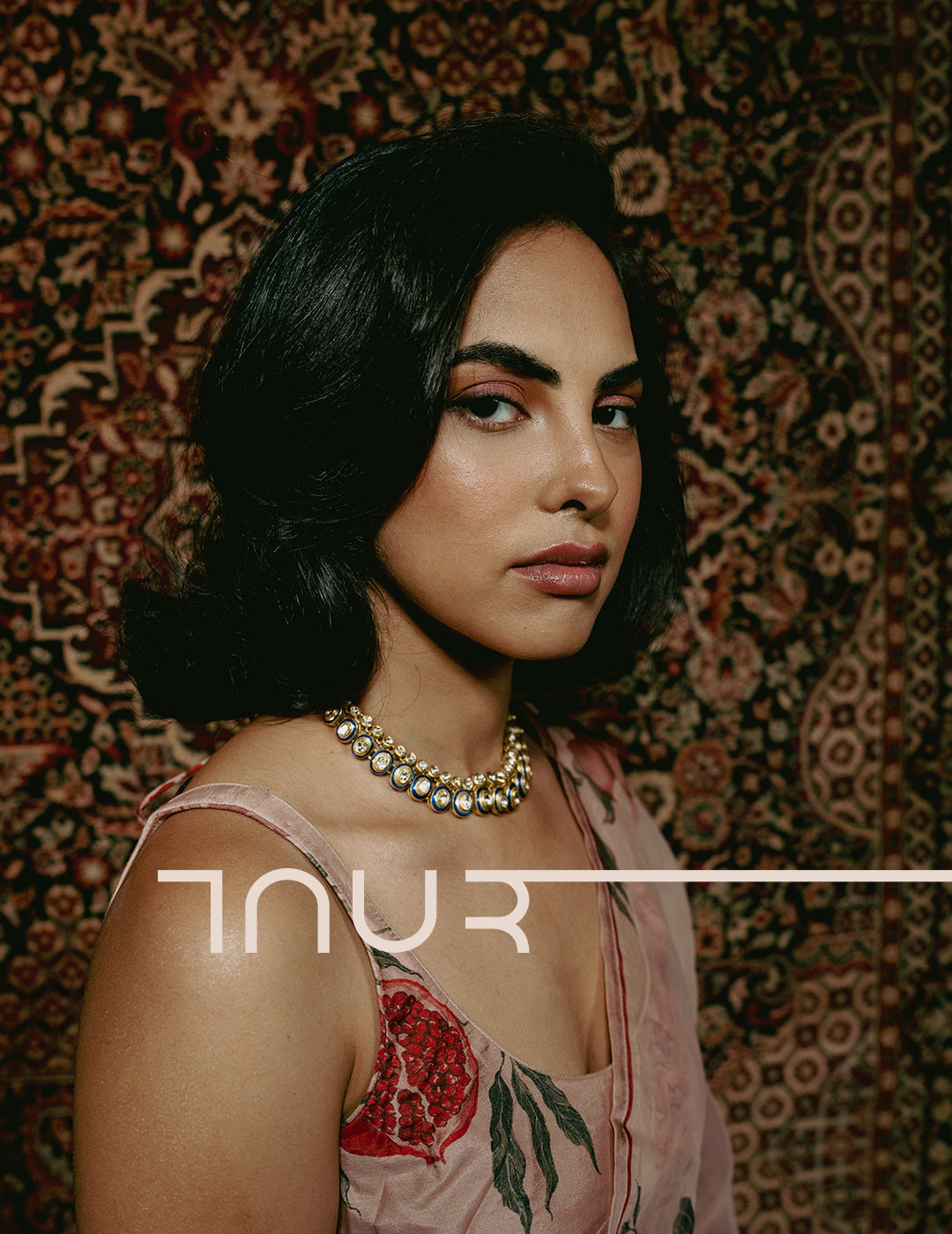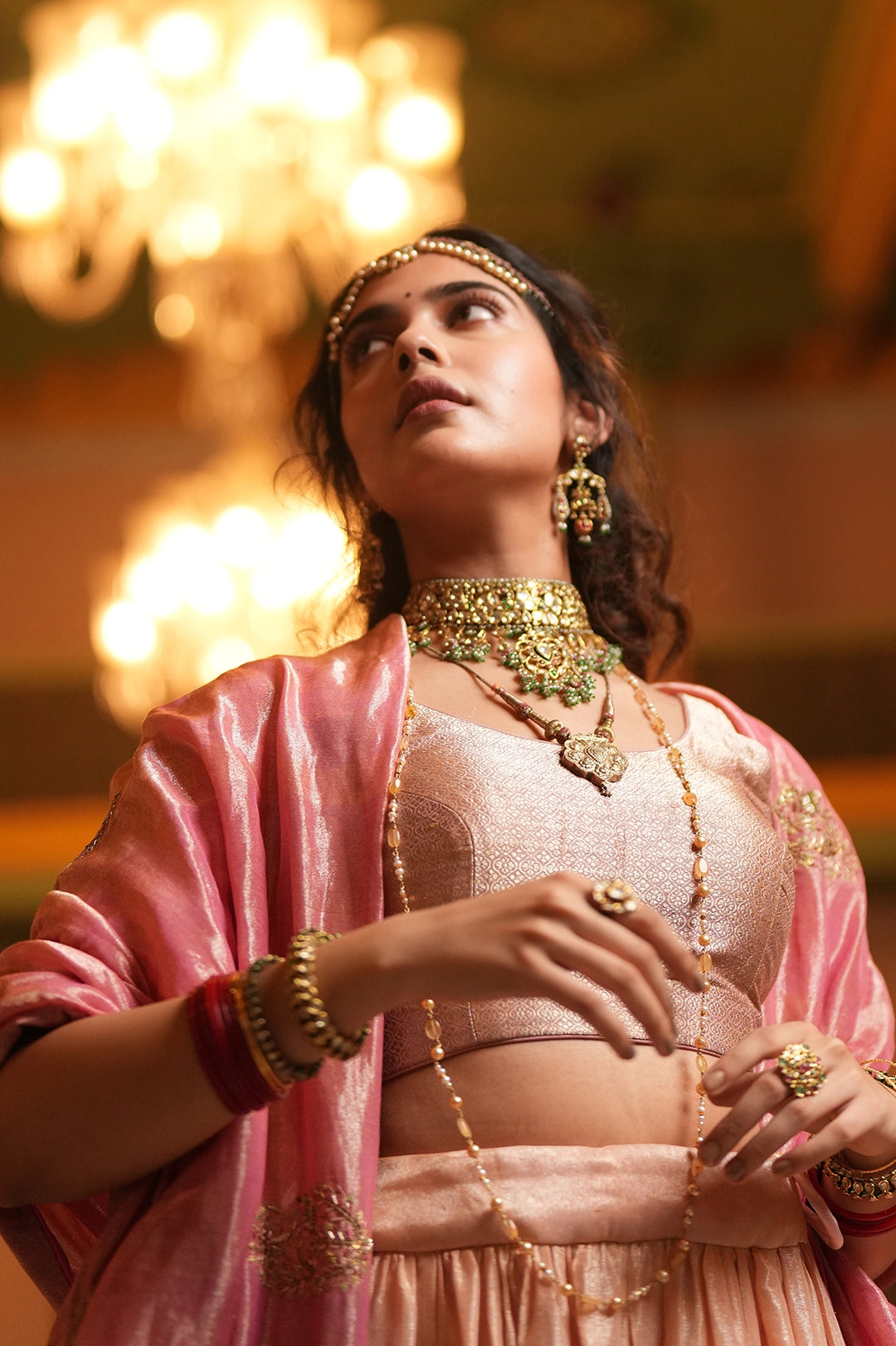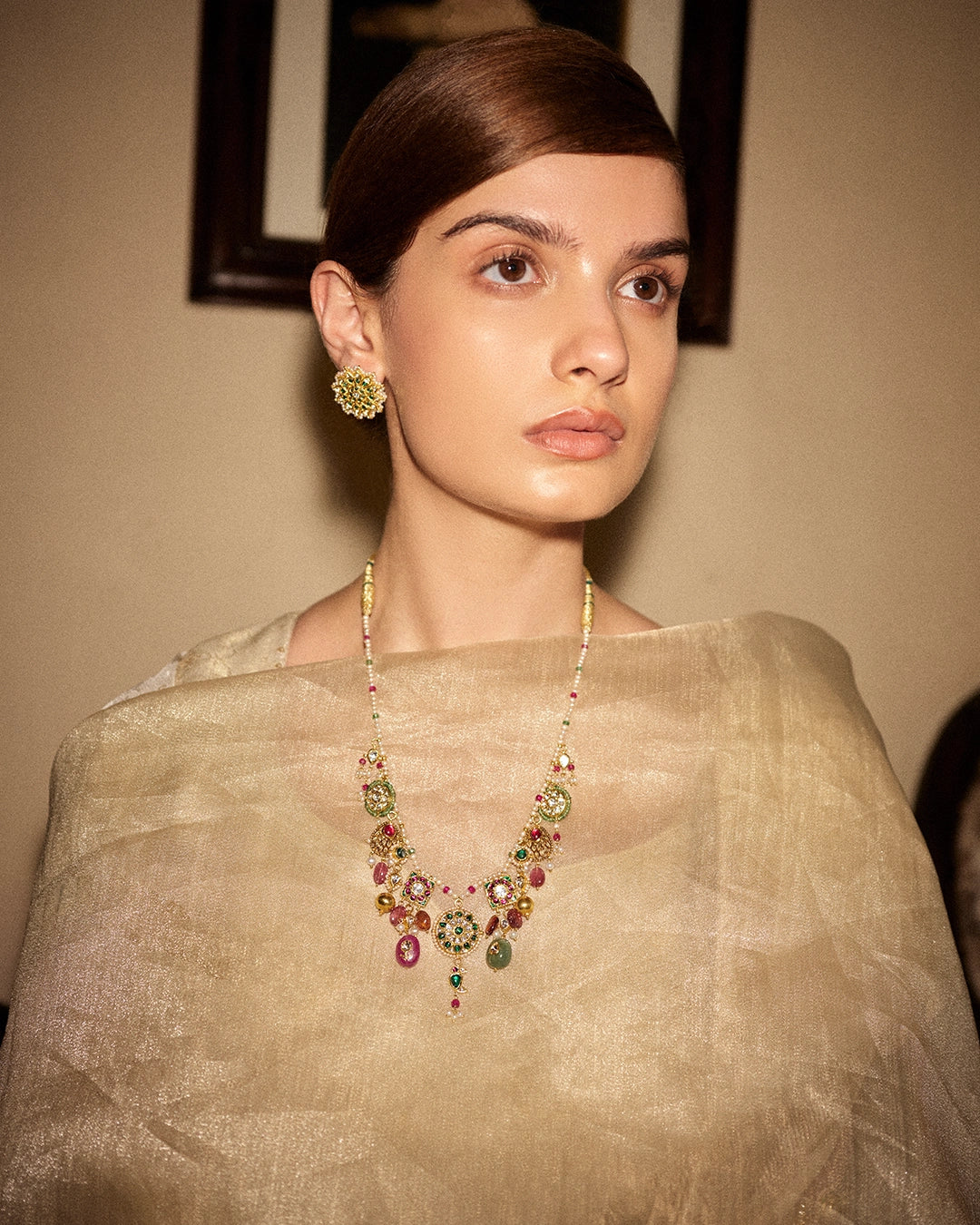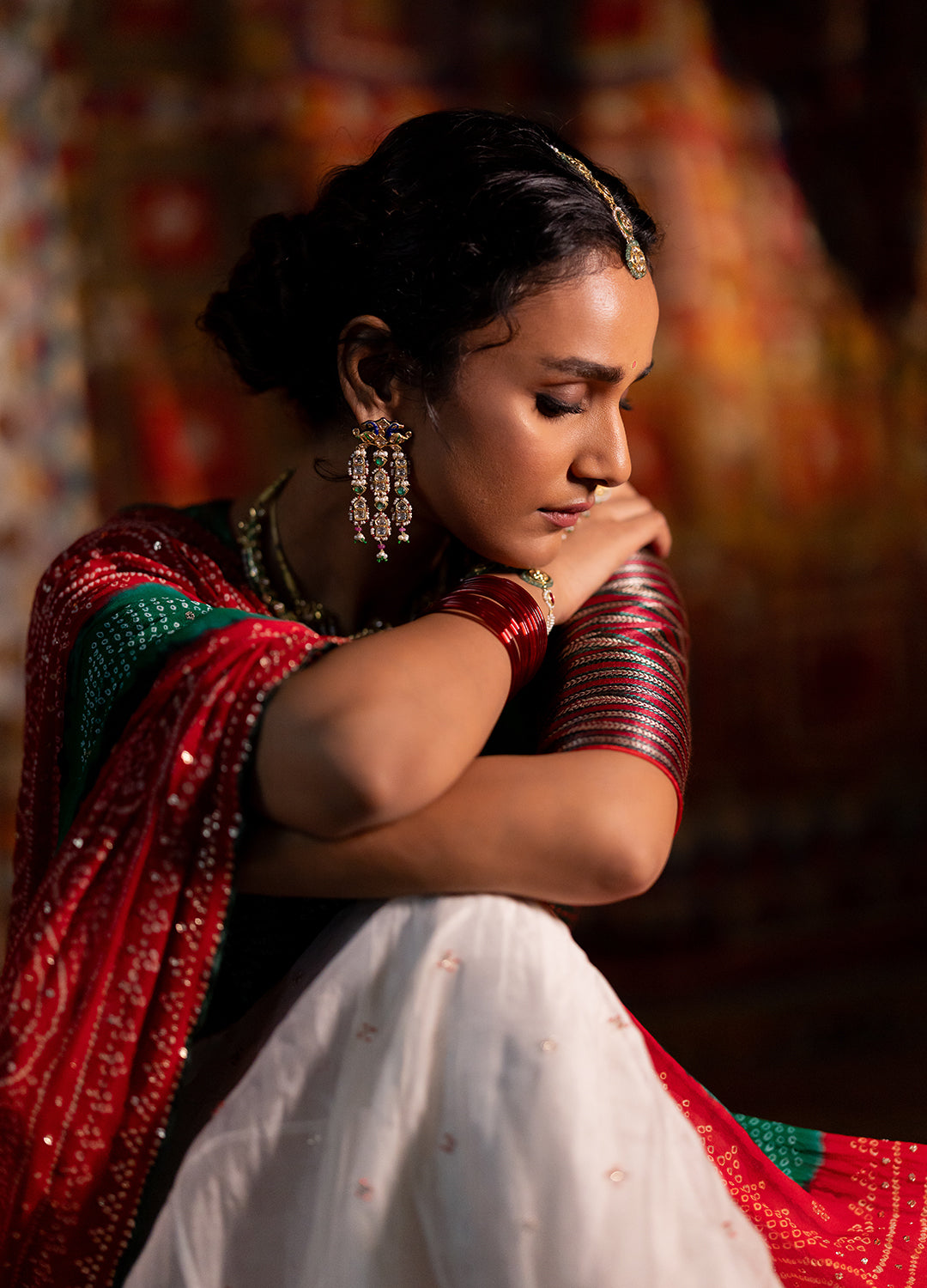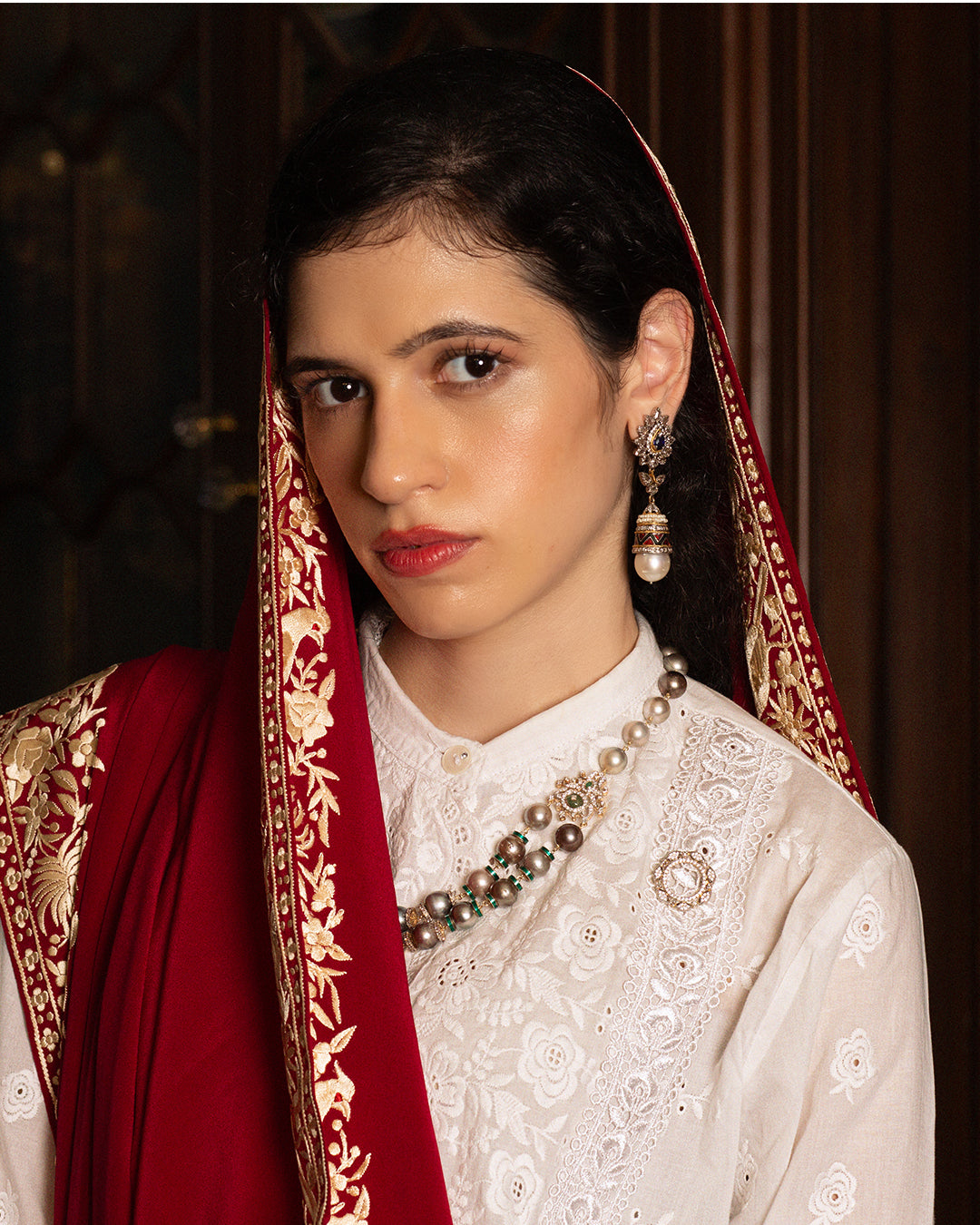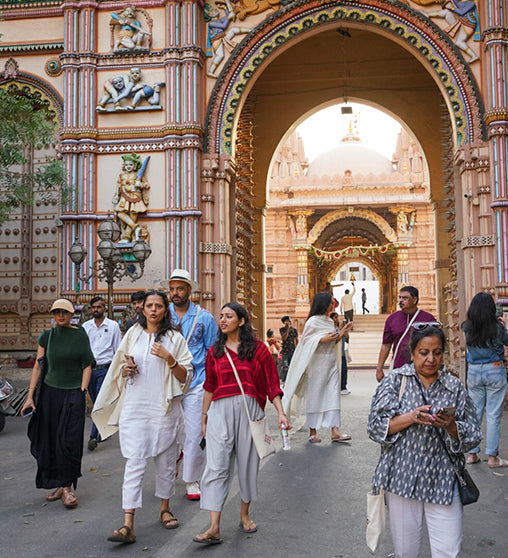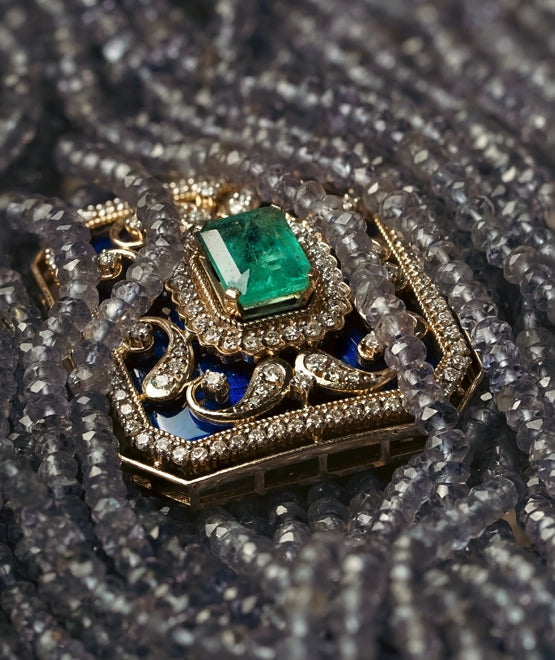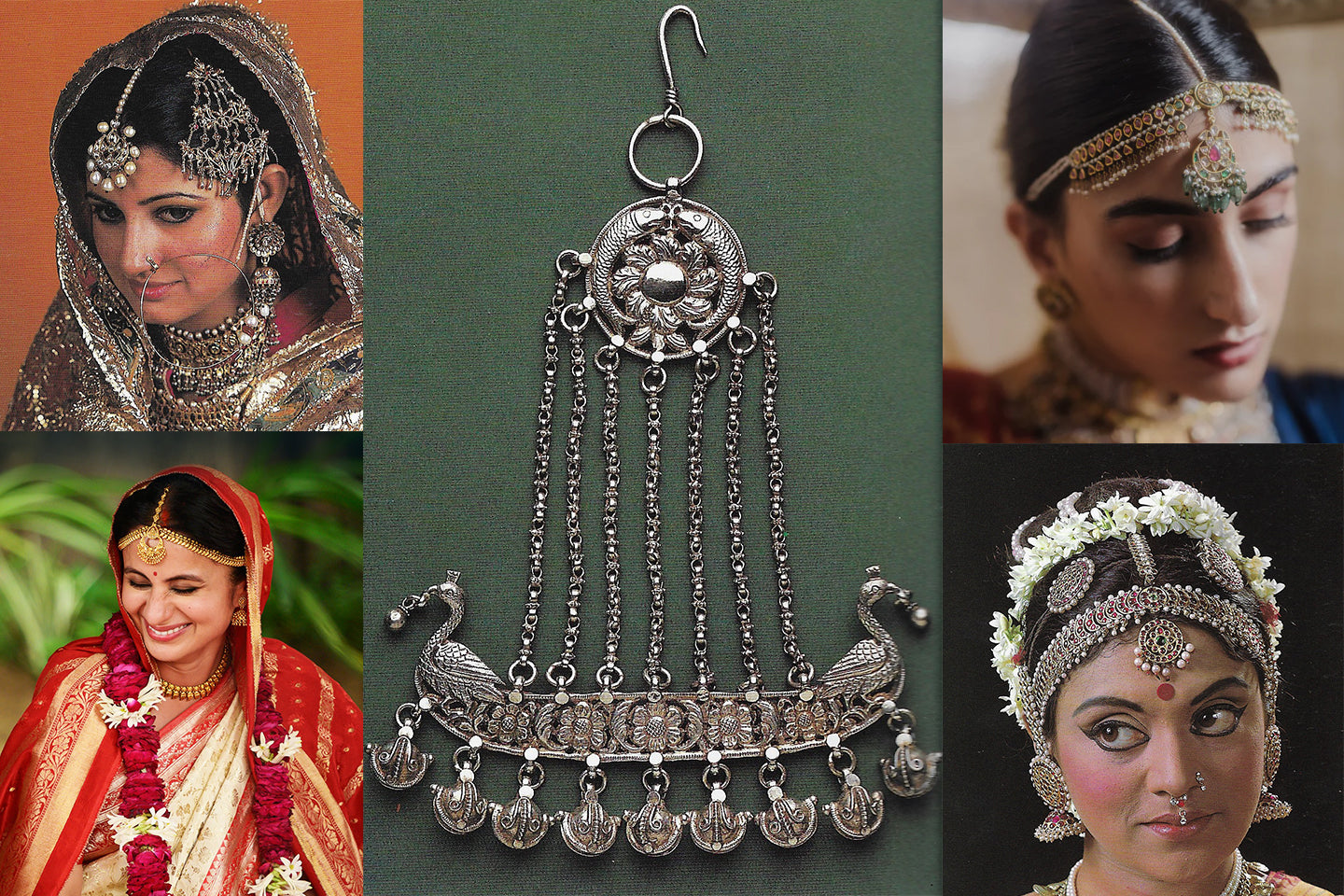Head jewelry and hair jewelry form an important part of the jewelry repertoire of women in India, which enjoys a diverse history and heritage like no other. Traditional Indian jewelry is intricately intertwined with its culture since antiquity as is evident from the numerous texts, stories, epics, and other literature that extensively talk about the significance of jewelry in Indian culture.
Traditional Indian head jewelry is rarely purely aesthetic, with no intrinsic meaning or symbolic value. Its highly evolved symbolism can be related to either popular magic or theology, both of which deal with general notions, concerns, aspirations, and fears shared by the culture it belongs to.

Bharatnatyam dancer Swapna Sundari wearing traditional gold head ornaments set with rubies and pearls, also worn by brides: The sun (suriyan) ornament (right side); the moon (santhiran) ornament (left side); diamond nose stud (besari or mukkuththi); septum ring (bulakku); three-part headband (thalaikkachchu or thalai-saman) with forehead pendant (vakchutti); and earrings (thodu) on the lobe with hanging dome-shaped part (jimiki) and attached chain (mattal). At the back of her head (unseen), she would wear a round ornament (rakkodi) or a braid ornament (jadanagam). In her hair is a floral ornament of fragrant screwpine flowers (thazhambu). Image courtesy: Traditional Indian Jewelry of India by Oppi Untracht
People have invested boundless energy and imagination in creating such an expansive assortment of marvels that embellish and honor the human body. All parts of the body—head, torso, limbs, and between and appended parts—have dedicated pieces of jewelry that they host, often in ingenious ways. A closer look at this complex relationship can unravel the layered importance of these adornments.
Also read: Surprising Things You Didn’t Know About Bird Motifs
Indian Head Jewelry
Maang Tikka
Making its first appearance in paintings and sculptures dated 5000 years ago, Indian head jewelry has a lot of religious and customary value. Adorning the head is an indispensable part of Sola Shringaar, the sixteen traditional bridal adornments of India. Maang tikka, matha patti, bor, and borla are different types of Indian head adornments belonging to different cultures. They are worn in the center parting of the hair and extend all the way to the forehead. Rajasthani brides wear a Borla, while Maharashtrian brides wear a Mandoria fashioned from a strand of pearls. Both of these are equivalents of the maang tikka.

On the left: Aurus' Gauhar Bor
On the right: Aurus' Niyati Maang tikka
Resting between the forehead, a major nerve point in the human body is believed to help in aligning and activating the chakras associated with this point. It is believed to be the place of chakra which refers to preservation. Connecting the wearer with the “third eye”, it is believed to help in harnessing the power of concentration, activating knowledge, wisdom, courage, and will-power. And that is the point where the pendant of the maang tikka rests.
Traditionally, an Indian woman wears a maang tikka for wedding for the first time and it is supposed to protect her from evil eye and negative energy, thus helping her at the beginning of her new journey.

A still from Mira Nair’s A Suitable Boy where we see Rasika Dugal wearing a traditional Indian matha patti. Image courtesy: Twitter
Also read: The Fascinating 200-Year History of Chandbali Earrings
Jhoomar
Jhoomar, known as Passa in Punjab, is a crescent-shaped/fan-shaped Indian wedding head jewelry worn on the left side of the head. It is mostly worn by Punjabi brides and forms an essential part of the jewelry of a Muslim bride, given its obvious Islamic influence. The Jhoomar came to India with the Mughals and was then adopted into their jewelry repertoire by the people in the North.

This silver head jewelry (jhumar) is rare because of the design subject in the upper roundel: two fish (mahi-maratib, honor of the fish), a symbol of the former Muslim court of Avadh, now Uttar Pradesh. In Mughal times, this symbol was carried in state processions as a standard, held aloft by a person attending the Nawab. From the roundel is suspended a barque, with peacock prow and stern, a symbol of royalty and regal pomp, and hanging balls (ghungru). Image courtesy: Traditional Indian Jewelry of India by Oppi Untracht

Gold head jewelry (jhumar) with diamonds, rubies, and pearls. It attaches to the hair by a top hook (missing). Image courtesy: Traditional Indian Jewelry of India by Oppi Untracht
The moon and the lunar calendar have played an important role in Islam since ancient times. The phases of the moon are also considered to be synonymous with human emotions, which are said to be controlled by the left side of the brain. That is probably why the crescent-shaped Jhoomar is worn on the left side by the bride for it is believed to keep her composure in her new life.
Also read: All You Need To Know About Polki Jewelry Set Going Black

Bride wearing traditional head jewelry (jhumar, also called chapka). Some were made with obverse and reverse sides (do-rukh), each ornamented with different gemstones to be reversible. She also wears a forehead ornament (mang tika) with pearl-strung support (mang patti) and a nose ring (nath), both symbolic of marriage in northern India. Image courtesy: Traditional Indian Jewelry of India by Oppi Untracht
Indian Hair Jewelry
Keshapasharachana stands for hair jewelry. After the bath, the bride's hair is dried and lightly scented with fragrant sticks before being braided or bunned and decked with flowers. Usually, flowers like Jasmine and Bel are used as hair ornaments, however roses and marigolds are also utilized in some parts of India. Jasmine has a long-lasting scent and freshness. A gajra in the bride's hair keeps her looking and feeling fresh throughout the day.
Jadanagam
The Jadanagam is traditional hair jewelry belonging to South India. It is a hair serpent, worn to decorate braided hair. The designs have patterns of sun, moon, flowers, and buds which are ruby and diamond-studded. The whole long braid is embellished with the cobra-like coils of precious jewels which divide into three silk tassels held together by encrusted bells.
The rakkadi at the back of the head is in the shape of the sun and symbolizes brilliance and might. It is followed by the crescent moon, which is a symbol of calmness and tranquility. The fragrant screwpine flower (thazhambu) is the third item, and the end Kunjam pieces are joined to the braid's tail.
Also read: Decoding Polki, Kundan and Jadau

Gold-braid hair jewelry (jadanagam, broad serpent) worn by a Hindu bride or a Bharatnatyam dancer. This traditional head and braid jewelry ensemble consists of six parts. At the top are the disc- and crescent-shaped units, together called the jadapillai. The disc symbolizes the sun (suriyan) and the crescent the new moon (amavasi). These are followed by the unit that represents the fragrant screwpine flower (thazhambu). The main body of the ornament, which is fixed on the triple braid, has the form of the multiheaded cobra Ananta-pambu, whose articulated, intertwined coils fall below. All units are ornamented with diamonds and cabochon-cut rubies. At the end is a three-part silk tassel (Kuchcham or kunjalam), each part ending in a bell form (mani). Image courtesy: Traditional Indian Jewelry of India by Oppi Untracht
Worn by the Devadasis or the temple dancers in the past, this tradition is continued by Bharat Natyam dancers who wear Jadanagam while performing. Where not available, they substitute it with an adornment woven out of flowers.

Gold-braid hair jewelry (jadanagam) in the form of articulated, intertwined cobras; Collection Barbier-Mueller Museum, Geneva. Image courtesy: Traditional Indian Jewelry of India by Oppi Untracht
References:
Traditional Indian Jewelry of India by Oppi Untracht
http://maninisbynehathackeray.blogspot.com/2016/08/the-jhoomar-or-passa-bridal-ornament.html
https://yehaindia.com/indian-traditional-jewellery-from-head-to-toe/
https://www.culturalindia.net/jewellery/significance.html
https://www.indianjewellerystore.co.uk/Indian-Jewellery-Guide
https://jewelsofsayuri.com/2010/02/list-of-ancient-indian-jewellery.html
